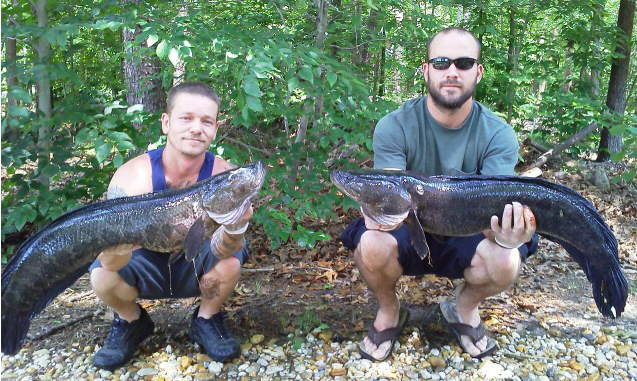
Where Can Snakeheads Be Found
The popularity of snakehead fishing has been growing by leaps and bounds, and as this invasive intruder has expanded its presence in Maryland’s waterways in recent years people have begun flocking to the state from all across the region to get in on the action. Just about everyone in search of an explosive snakehead strike and the shockingly good fresh fish meal that follows has the same question: where can snakeheads be found?
The bottom-line answer to this question is pretty simple, because snakeheads have become so prevalent that virtually every freshwater tributary to the Chesapeake Bay, as well as many landlocked lakes and ponds, now supports snakehead populations to one degree or another. As is often the case with any fishery, however, there’s more to this story.
Shortly after their escape into the wild in 2002, snakeheads began showing up in strong numbers in the upper Potomac River and the creeks feeding it. And although these are freshwater fish, they can tolerate salinity levels up to 10 to 15 ppt. During periods of heavy rainfall, that means they can travel from one bay tributary or creek to another — and their spread has reached all the way up to the Chesapeake’s headwaters, the Susquehanna River. In all of the western shore tributaries and most of the eastern shore tributaries as well, you can find snakeheads wherever salinity levels are below their tolerance level (note that their range can expand and retract as salinity levels change). As a rule, you’ll find them in the same types of environments you’d locate largemouth bass. They orient to structure and cover like fallen trees, lily pads or weedbeds, and transition areas where channels meet shallow flats, just like those bass do. They have one important adaptation, however, that allows them to expand their territory well beyond that of bass.
Snakeheads can breathe out of the water, thanks to a labyrinth organ. This allows them to survive and even thrive in environments with very low dissolved oxygen levels. Thanks to this ability they have moved into areas like the shallows of the Blackwater River complex, where competitive predators such as those bass don’t do very well. In fact, this ability means that they can even wiggle across mud flats and mere trickles of water, colonizing road-side ditches, lakes that drain into tidal waters, and ponds that are connected to riverine waters by culverts or trenches that may be dry more often than they hold water.
If you’re on the search for snakeheads, remember that this ability allows them to hunt in areas that other predators leave untouched. Specifically, very shallow, weed-choked, sun-warmed waters where they may encounter plenty of prey but very little competition. There is essentially no water too shallow for a snakehead, and often you can pull trophy-sized fish from areas that aren’t even deep enough to completely cover the fish’s back. In fact, snakehead sharpies sometimes joke that the best way to cast a lure to a snakehead is to throw it up onto dry land, and begin your retrieve there.
Although snakehead fishing is best during the warmer months of the year, they do bite more or less year-round. When you’re looking for snakeheads during chilly months, however, expect to find the fish in deeper areas. Channels with several feet of water are more likely to be productive most of the time, with the fish temporarily moving up into shallower areas after a few warm, sunny days when water temperatures spike.

Okay: are you ready to get out there and find some snakeheads of your own? The waterways commonly rated with top-tier snakehead populations include:
The Blackwater River complex and surrounding tributaries, including the Blackwater, the Little Blackwater, the Chicamacomico, the Transquaking, and countless streams and ditches connected to them.
The upper Wicomico River.
The Potomac River creeks and tributaries from Port Tobacco Creek upriver, including Nanjemoy, Chicamuxen, Mattawoman, Pomonkey, Piscataway, and Mallows Bay.
The upper Patuxent River.
The lower Susquehanna River and the Susquehanna Flats.
In all of these places, remember to seek out shallow, weedy zones during the warmer months of the year, and transition zones to deeper water during chillier months. Chances are, you’ll be hooked up to a snakehead in short order.
Be sure to acquire your fishing license from the Maryland Department of Natural Resources before heading out. Visit our Plan Your Trip page for information on fishing charters and guides, lodging options, marinas, retailers, and more.
You can purchase your Maryland License online, 365 days a year, 24 hours a day.
Be sure to visit the Maryland Department of Natural Resources online for more information on seasons and regulations before heading out!
In need of additional inspiration? Check out Fish & Hunt Maryland’s latest articles written by fellow sportsmen and local partners.
When it’s time to travel again and you’re planning the next trip, check out the Plan Your Trip section of the Fish &Hunt Maryland’s website to find lodging, fishing charters/guides, and outdoor retailer options.